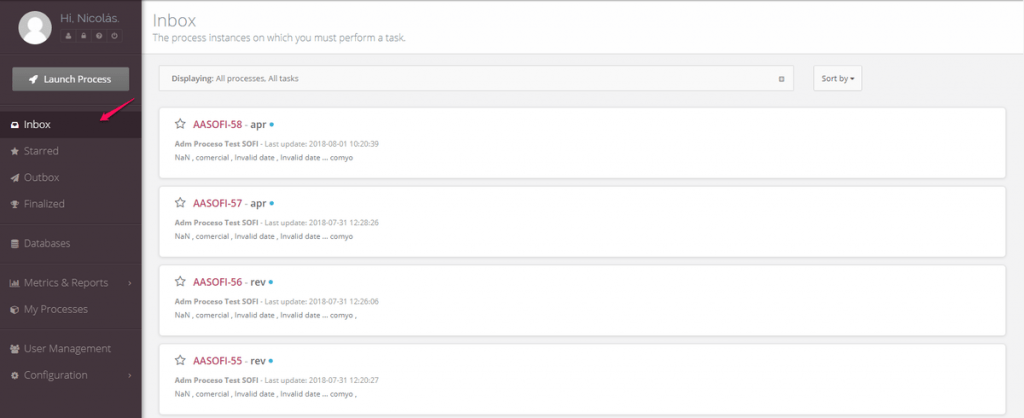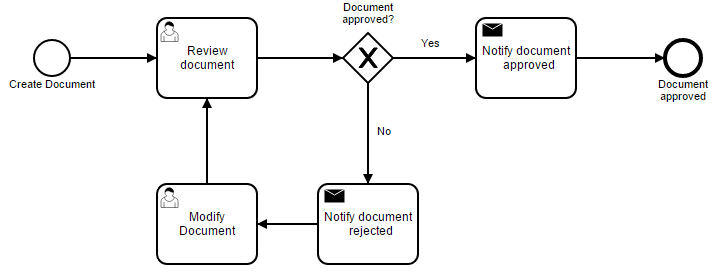The Covid-19 (Coronavirus) has set a before and after in how business work, and in particular, how they interact and collaborate with its employees. Nobody doubts that the “new normal” post-pandemic, won’t be the same as pre-pandemic reality. Especially, the concept of business process management and its automation has taken a notorious relevance for the survival of companies and their future development.
Introduction
In 2011, a quote by Marc Andreessen, published in the Wall Street Journal became famous: “Software is eating the world”. In the new normal, the automation and management of business processes are eating the conventional ways of working. Why? Because of the current demands: sanitary, market, and employees. In this article, we will see in detail these elements and how to provide an answer.

Needs and preferences of the new normal
The new normal demanded changes in company employees’ work habits, as well as in customer habits of consumption. But, some of these changes shown relevant benefits, so they became from being “needs” to being “preferences”. This means that they are here to stay, even if the Coronavirus pandemic finishes, several new habits, and behaviors will remain.
Social distance
Social distancing proves to be one of the most effective measures to stop the spread of virus COVID-19. It implied that several offices could no longer work as they did, for the simplest of all reasons: there wasn’t room enough to keep the recommended distance. Being like that, several organizations instrumented rotary work (a different group each day), working from home, reduction of hours to create turns, etc. In all of these cases, the result is the impossibility of maintaining the whole team together, so that the collaborative software tools took more importance, like tools for videoconferences (Zoom, Meet, etc.), shared workspaces (Slack), collaborative document editing (GSuite), instant messaging (Chat, WhatsApp), and of course, the automation and management of business processes too.
Difficulty with transportation
Related with the previous point, the transportation, being within the city, the country, or international, they were noticeably reduced. Not only because of the social distancing but also to avoid going places where you could contract the virus. The answer was similar: virtual meetings, messages, and videos exchanged, emails.
Adopted and desired remote work
Once people went through the initial curve of adoption of all technologies and adapted to the change, something happened that before the crisis wasn’t expectable: they got used to it, and they liked remote working.
Not only that but also some people really liked the new modality. And, on top of that, proactive and self-driven people, achieved a significant increase in productivity. All of that in conjunction with an eventual cost reduction for the company (facilities) and for the employees (transport, eating out, time spent in transportation).
For the aspects raised, and for many more than the attentive reader must be thinking, it’s clear that the new normal won’t be the same, and that the organizations that want to survive should adapt to attend all of these issues. The question is, how?
Business process management as the answer.
The business process management discipline, or BPM, gives a holistic vision and a complete solution for several issues that come with the new normal.
Facilitate asynchronous, geodistributed work
Automating a process implies (among other things) to define which tasks or stages must be done, and by whom. This work is naturally asynchronous. A person completes a task, the system assigns the next one to the following person. He receives that task in his inbox and completes it some other time, not necessarily immediately. But also, the second person receives the complete context to do so, not needing to be in contact with anyone to complete his task. In this way, the work is asynchronous and perfectly doable from different locations (your home, another city, another country).
The business process management system is capable of assigning the tasks, waiting for its completion of course, but also is capable of obtaining performance indicators (KPI’s). These could be displayed in the dashboard, so that other people (a supervisor, manager) can check them, also asynchronously and from another distant place.
In this context, the remote work cycle is completed; a task is assigned, it’s done and controlled, in an asynchronous and geo-distributed fashion.

Reducing poor interpretations and executions
A fundamental factor to achieve an effective execution is to avoid poor interpretations of “what’s supposed to do” and “how I’m supposed to do so”. That risk, increments in a remote work scenario (total or partial). Now, is not that easy to ask a co-worker “how do you do this”, which also implies that many times, something wrong is assumed. The experience shows us that is much more expensive to correct a mistake, than avoiding it.
A formal definition of each business process through standard notation, like BPMN, allows to reduce, or avoid, the possibility of an error by misinterpreting what’s to be done. The possibility of adding documents to each user task, allows us to include clear instructions, so the person knows what and how he needs to complete that task.
In the same way, the cloud BPM engine, also called cloud Workflow engine, will interpret without ambiguities the definition of the process. Being like that, we can rest assured that all executions of the process will be as we desire, not being left to each person’s interpretation, which is often prone to error.

BPM as a synonym for agility and independence
The IT staff, and in general the technology departments, are usually overwhelmed with work. This implies that the instrumentation of any tool or a new process requires time. Much time. This bottleneck has led to business units searching for agile solutions, that can be directly instrumented. In this context, the no-code/low-code solutions arise. These are no more than software tools that can be set up and used by people with no tech or coding skills.
By using low-code/no-code tools for business process management, the business units achieve both goals: agility and independence. They can formally model and put to work a whole process in just a few hours. Plus, they can do so with independence from the technology departments.
These two capabilities (agility and independence) are vital to be able to react in time, form, and with reduced costs to everyday changes, not only due to the sanitary crisis because of the Covid-19 virus, but also for market changes, competitors and regulations.
As the animal species, the companies that survive are not the big or strong ones, but the ones that better adapt to change.
An instrument like the Process Library helps even more in this way, allowing to start from processes already modeled, tested, and used by other organizations. Without programming or complex configurations, these process templates can be adapted and extended to attend any specific business needs, in a short time.
Our experience tells us that, after the implantation of the tool in a whole business unit, the technologies department starts to pay attention to it. These departments value the results achieved, and from there support the initiative, understanding that is not a burden to them and provides concrete solutions to different units.
In conclusion
The coronavirus crisis generated a new normal, where people work remotely, not only compulsorily, but also because of convenience for them, for companies, and clients. Plus also, it teaches us that those companies that can work asynchronously and geo-distributed, are more efficient in various aspects.
The business process management brings concrete and complete solutions to the requirements of this new normal. But also, it does so by providing agility and independence so that each business unit can attend its own needs, allowing the company to be more competitive. From there, the technology departments understand the added value and support these initiatives, without them being a burden for them (cost, timewise, etc.)
In the new normal, and the future of the companies, it seems obvious that business process management is a key point, for short term survival, and competitiveness, and mid-long term growth.
If you want to read more articles about BPM, you can find more here.
Schedule here a 30 minutes session and see how you can easily integrate Flokzu with your custom software development.





























